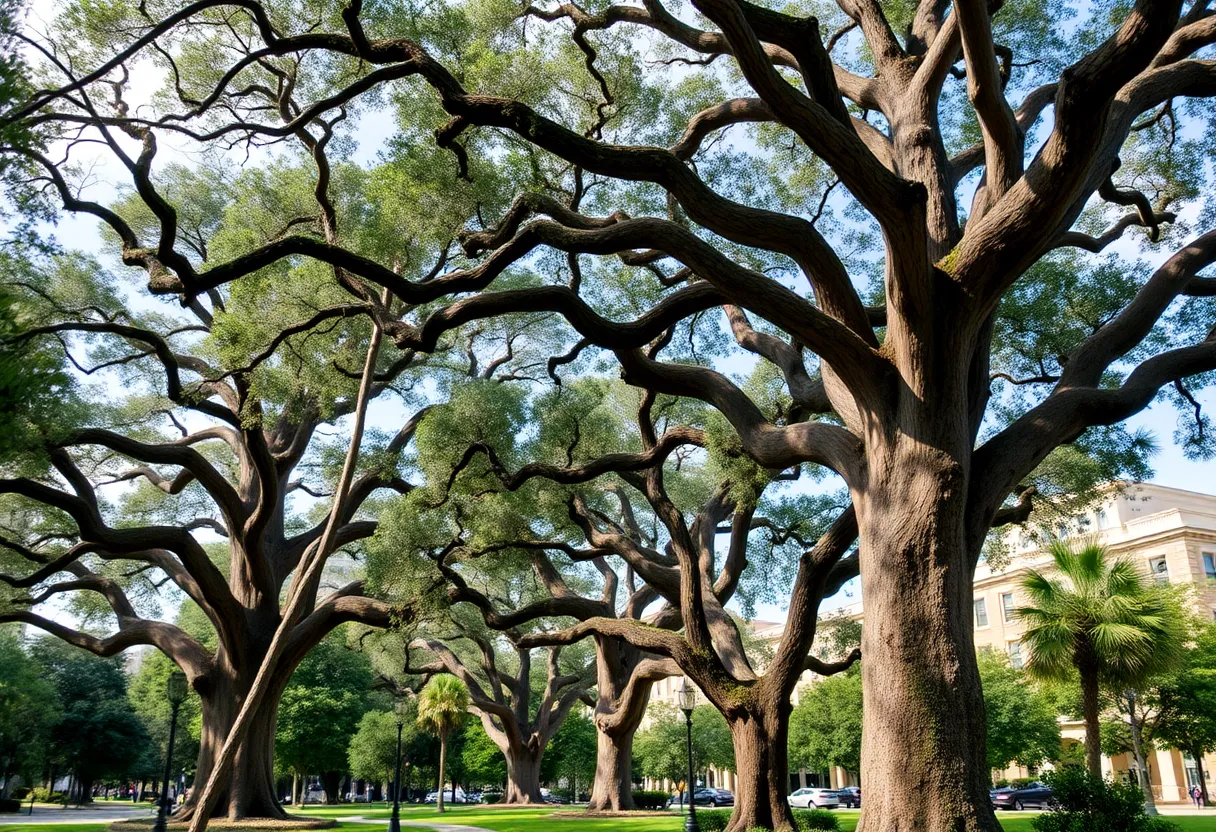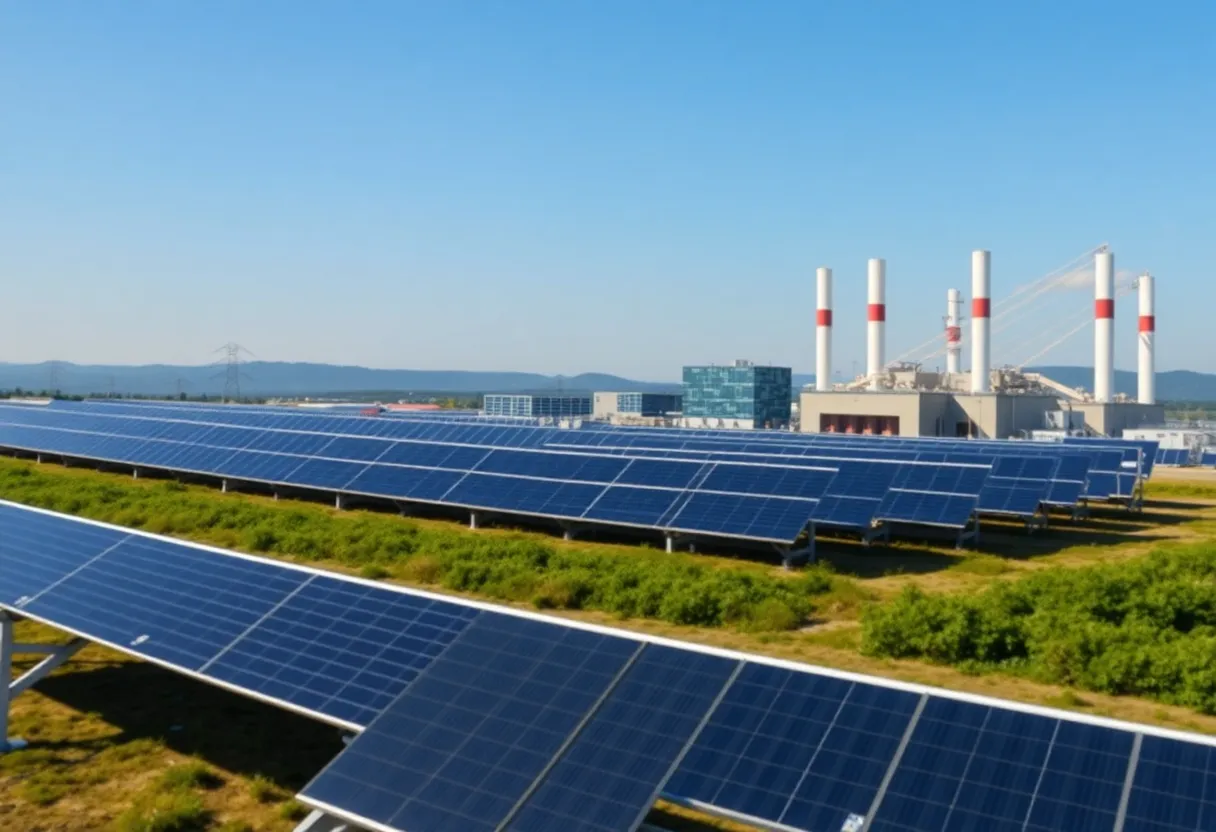News Summary
Savannah is experiencing a significant decline in its historic live oak tree canopy, with projections indicating many may perish by 2040. Factors contributing to this alarming trend include aging processes, severe storms, and rapid urban development. The Savannah Tree Foundation has overseen the planting of thousands of new trees and aims to launch initiatives that promote diversity in urban forestry. Community efforts are essential for preserving this vital ecological asset as the city continues to grapple with urban expansion and environmental challenges.
Savannah is facing a significant decline in its iconic live oak tree canopy, with projections indicating that a substantial portion of these historic trees may die by the year 2040. The alarming forecast, provided by Kathryn Erickson of the Savannah Tree Foundation (STF), attributes this decline to natural aging processes, the impacts of severe storms, and rapid urban development.
The live oaks of Savannah, which have stood for between 200 and 250 years, are crucial to the city’s landscape and environment. Over the past 22 years, the city has experienced a loss of more than 21,500 acres of tree canopy, primarily due to extensive warehouse development in west Chatham County. Additionally, severe weather events, such as Hurricane Helene, have contributed to the tree loss, with the city reporting 113 downed trees in that incident alone, including a nearly 100-foot-tall giant.
The Savannah Tree Foundation has taken proactive measures to address the tree decline. Since the 1980s, STF has overseen the planting of approximately 6,000 trees representing over 54 different species in Chatham County. Looking ahead, the foundation aims to plant and distribute an additional 6,500 trees within the next year as part of their ongoing effort to restore the urban canopy.
In a bid to develop a sustainable forest initiative, STF plans to cultivate a diverse array of tree species better suited to the evolving urban environment. To support this initiative, a group known as Canopy Corps has just begun work, with four apprentices working part-time on tree planting and care efforts as of September 9. These members will receive hourly wages of $17.50, funded by a $1 million grant from the Georgia Forestry Commission. Through this program, the STF hopes to encourage diversity in horticulture and forestry by mentoring individuals from underrepresented backgrounds.
Beyond their aesthetic appeal, live oaks provide vital ecological benefits, mitigating wind impacts by up to 30% and absorbing 500 to 1,000 gallons of water annually. However, urban conditions have compromised their health. Typically, live oaks can live for around 200 years in a city environment compared to up to 500 years in their natural habitats. The roots of these trees have been increasingly confined by concrete, hindering their growth and overall wellbeing.
The savannah tree nursery, covering one acre along the Savannah River, is crucial to the STF’s mission. Established on a former landfill, the nursery currently houses around 4,000 trees representing 14 native species, including various oaks and cypress. This initiative focuses on propagating trees from local sources rather than relying on outside suppliers, ensuring that new plantings are adapted to the local context.
Further plans are in place to plant 1,000 new trees in economically disadvantaged neighborhoods in Chatham County and an additional 450 in public parks. At Gulfstream’s upcoming Family Day, approximately 5,000 trees will be distributed to residents seeking to enhance their landscapes. Additionally, Savannah officials are gradually replacing aging live oaks with younger trees, which are expected to provide shade in 15 years and reach maturity in about 40 years.
Residents interested in contributing to the preservation and replenishment of the tree canopy can request tree plantings in their yards through the city’s initiative dedicated to this cause. Efforts to plant saplings from the seeds of dying oak trees are also part of STF’s plan, aimed at continuing Savannah’s rich legacy of majestic live oaks.
The urgency to act is increasingly apparent as Savannah witnesses both the decline of its cherished live oak canopy and the impact of urban development on the city’s green infrastructure.
Deeper Dive: News & Info About This Topic
HERE Resources
Exploring the Coastal Beauty of Georgia
Savannah Celebrates with a Week of Green Activities
Yellow-Legged Hornet Nests Successfully Eradicated in Savannah
Additional Resources
- Savannah Now: Live Oak Canopy
- Wikipedia: Savannah, Georgia
- Garden & Gun: Iconic Oaks
- Google Search: Live Oak Trees Savannah
- AJC: Sweet Tea Iconic Trees
- Google Scholar: Savannah Live Oak Ecology
- WJCL: Aging Live Oak Canopy
- Encyclopedia Britannica: Oak
- WSAV: Iconic Live Oaks
- Google News: Savannah Tree Canopy Decline

Author: STAFF HERE SAVANNAH WRITER
The represents the experienced team at HERESavannah.com, your go-to source for actionable local news and information in Savannah, Chatham County, and beyond. Specializing in "news you can use," we cover essential topics like product reviews for personal and business needs, local business directories, politics, real estate trends, neighborhood insights, and state news affecting the area—with deep expertise drawn from years of dedicated reporting and strong community input, including local press releases and business updates. We deliver top reporting on high-value events such as Savannah Music Festival, St. Patrick's Day Parade, and Savannah Jazz Festival. Our coverage extends to key organizations like the Savannah Area Chamber of Commerce and United Way of the Coastal Empire, plus leading businesses in aerospace, education, and logistics that power the local economy such as Gulfstream Aerospace, Savannah College of Art and Design, and Colonial Group. As part of the broader HERE network, including HEREAtlanta.com and HEREAugusta.com, we provide comprehensive, credible insights into Georgia's dynamic landscape.




